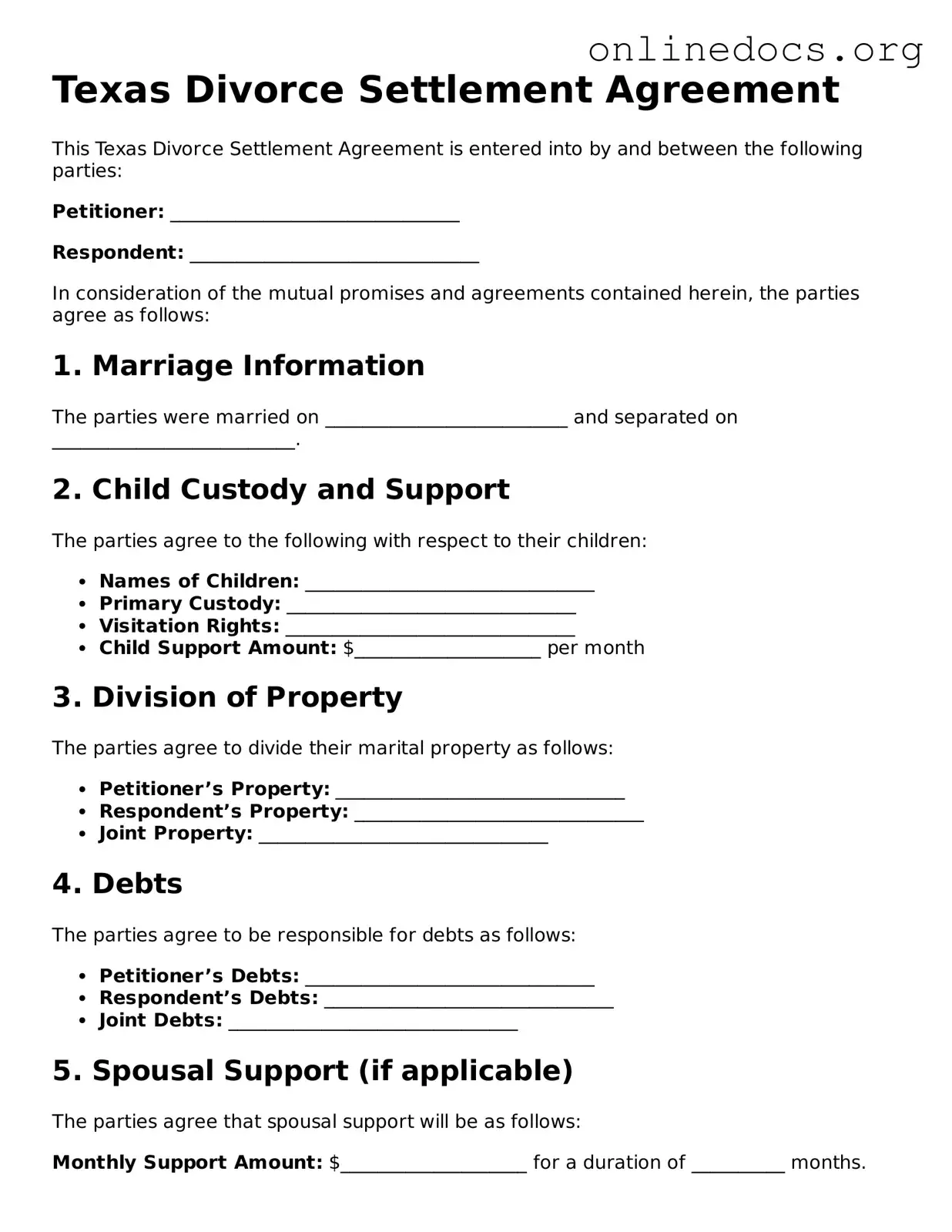The Texas Divorce Decree is a critical document that finalizes the divorce process. Like the Divorce Settlement Agreement, it outlines the terms of the divorce, including asset division, child custody, and support arrangements. However, the Divorce Decree is issued by the court, making it a legally binding order. In contrast, the Settlement Agreement is typically negotiated between the parties before being submitted to the court for approval. Both documents serve to clarify the responsibilities and rights of each party post-divorce.
Understanding the importance of legal documents in personal circumstances is vital, especially in complex situations like Power of Attorney. The California Power of Attorney form allows individuals to appoint someone they trust to make decisions on their behalf, ensuring their preferences are honored when they are unable to act independently. For more information about this crucial document, visit californiapdfforms.com/power-of-attorney-form/.
The Marital Settlement Agreement is similar to the Texas Divorce Settlement Agreement in that it is a written contract detailing how a couple will divide their assets and responsibilities. This document is often used in uncontested divorces, where both parties agree on the terms without needing court intervention. Like the Texas form, the Marital Settlement Agreement can cover issues such as property division, spousal support, and child custody arrangements. However, it may also include provisions for future changes, which can be beneficial if circumstances evolve.
A Child Custody Agreement is another document that shares similarities with the Texas Divorce Settlement Agreement. This specific agreement focuses solely on the arrangements for children involved in a divorce. It outlines custody arrangements, visitation schedules, and child support obligations. While the Divorce Settlement Agreement may include these elements, the Child Custody Agreement provides a more detailed framework for parenting responsibilities, ensuring that the best interests of the child are prioritized.
The Property Settlement Agreement is closely related to the Texas Divorce Settlement Agreement, as it specifically addresses the division of marital property. This document delineates how assets and debts will be allocated between the spouses. While the Divorce Settlement Agreement encompasses broader divorce terms, the Property Settlement Agreement hones in on financial matters, ensuring clarity and fairness in the division of property, which can help prevent future disputes.
The Parenting Plan is akin to the Texas Divorce Settlement Agreement but is tailored specifically for co-parenting after a divorce. This plan outlines how parents will share responsibilities and make decisions regarding their children’s upbringing. It covers aspects such as education, healthcare, and extracurricular activities. While the Divorce Settlement Agreement may mention parenting arrangements, the Parenting Plan goes into greater detail, providing a roadmap for effective co-parenting.
The Separation Agreement, while not exclusive to divorce, bears similarities to the Texas Divorce Settlement Agreement. It is a contract that outlines the terms under which a couple agrees to live separately. This document can include provisions for child custody, support, and property division, similar to those found in a divorce settlement. The key difference lies in its application; a Separation Agreement can be used when a couple is not yet divorced but wishes to formalize their separation terms.
